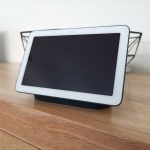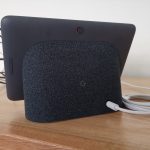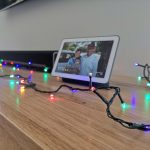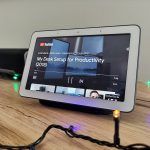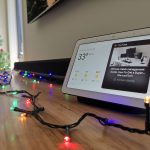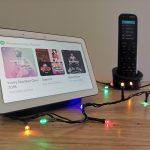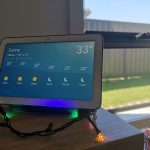For many years we've been sold on devices with digital displays for the kitchen bench, but it's safe to say your still living with a dumb kitchen. Google's Home Hub is a connected device that features a 7" touchscreen display. That display can provide you with visual information, while you interact with the device either via touch, or by using Google's Assistant with voice.
There's growing competition in this space, with Amazon's Alexa Show and internationally, Facebook Portal. The Google Home Hub is on the smaller size, but it does pack a serious lineup of features to take an already IoT-laden house and allow you to drive it with just your voice, or by combining touch interactions if you prefer.
After spending just over a month with the Home Hub, I know it well and understand how it integrates into my family's life and how it may work for you.
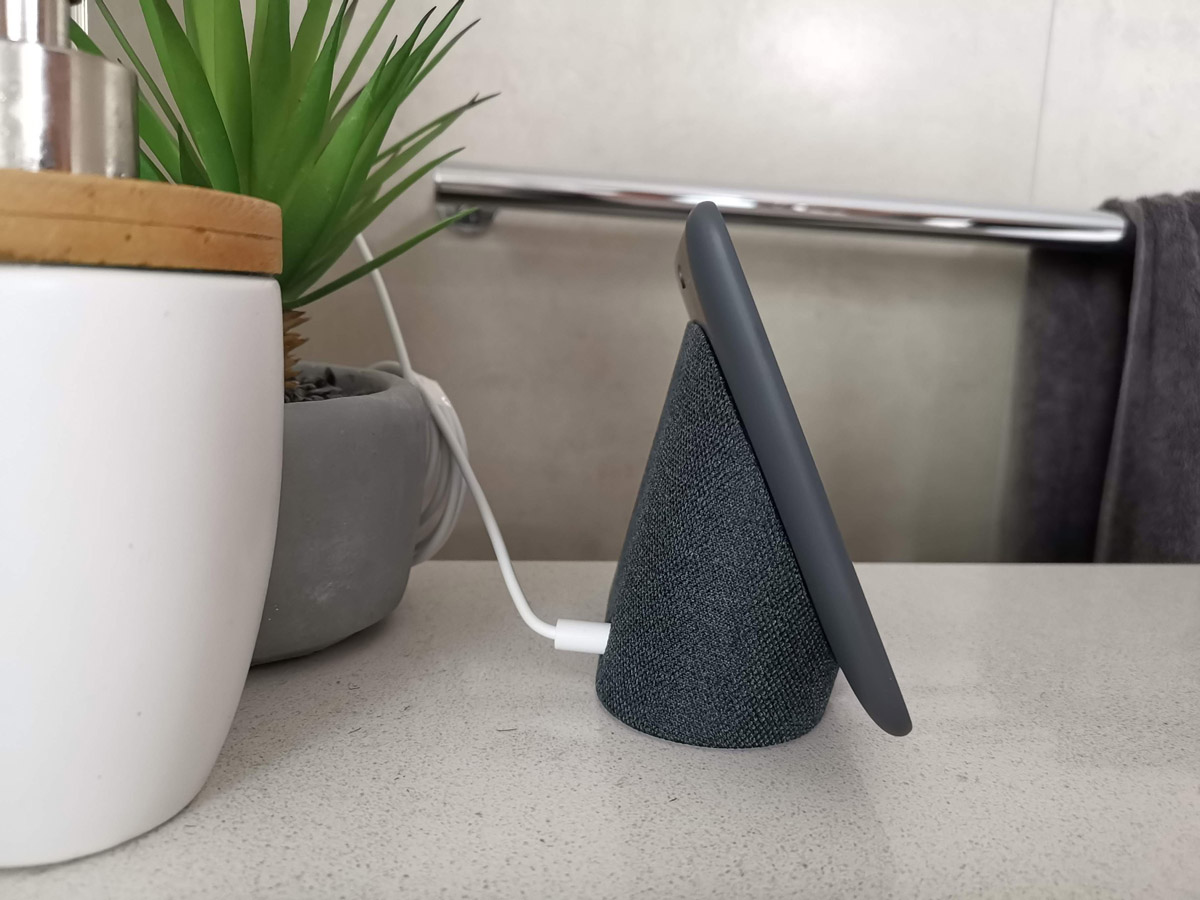
DESIGN
Bold, colourful, delightfully confident
There's really 2 was to think about the design of the product. One is the physical hardware are software design and we'll definitely get into that, but then there's the design of how this gadget will fit into family's home, which takes us to the device's broad range of applications and the fact you're likely to want multiple of these around the home.
I found the Google Home Hub really useful in the morning to get your news update for the day, weather forecasts so you knew what to wear, or just to play music or podcasts while you're having a shower. Being able to yell commands at it over the ambient noise of the running water and the fan was seriously impressive, enabling you to easily skip songs that aren't to your liking, or to the next news headline.
I also found the Home Hub was perfect on the kitchen bench. Not only was the ambient photo slideshow a great thing to walk by each day and remind you of happy memories, it was fantastic for cooking. The way it breaks down a recipe, goes out to the web and provides images for each food product in your meal, means if you're unfamiliar with an ingredient, you'll be visually prompted by the Home Hub to make sure you're adding the right thing.
These were my most common uses for the Home Hub, but I have no doubt plenty of people will have them on their bedside tables or in the living room as a tiny voice-enabled second screen. Importantly the Home Hub can control other connected devices around your home, so having it in a central location, you can yell to is insanely helpful.
Hardware
The device itself looks like a small Android tablet, mounted to a base stand. With it's 7.0" touchscreen surrounded by a 2016 thick bezel that's white in colour, it's not a slick no bezel or all-black solution that it definitely could be come 2019. The display is fixed to one angle which is disappointing given you'll be varying distances from it, it'd be nice to angle it as you need.
The rear of the device doesn't matter that much as it'll often be facing a wall, thanks to the devices need to be connected to AC power (no battery option). That's a shame as the fabric base looks great, our review unit was charcoal, but it comes in a variety of options to suit your style and interior design.
If you're the paranoid type, Google have included a hardware switch to disable the microphone. This is conveniently located behind the top, center of the screen. The only other button on the device is volume rocker on the back of the right-side of the screen. While volume can be adjusted using the touchscreen, having physical buttons for this was a great inclusion as its fast, easy and zero learning for new users who need to turn things down fast.
The last thing to know is the bottom of the base is silicon, which makes it stable on any surface you place it on and it also won't mark it. This is important if you have stone, marble or wood finishes to your cabinetry. There's no hard plastic feed to scratch things up, so in terms of design with foresight of how it'll be used, this is a massive success. Nice work Google.
Software
The operating system on this is surprisingly not Android, which is both positive and negative. The upside is that it's a unique interface, specifically designed to compliment the hardware and the objectives of the home device. The downside is that its a Google device that can't run any of the apps from your phone. The connection between the two platforms comes in the form of the Cast platform. This means media can be wirelessly sent from devices (like your mobile), to the Home Hub.
Generally it takes a few days of use to get used to the voice commands you can feed Google Home Hub and the same if you choose to interact directly with the touch screen (you may never do this). There's swipes and gestures all over the place, but the OS is generally helpful in suggesting new things to try. I do wish there was a simply menu to pull up items like your Calendar, but at the end of the day, this device is all about voice-first, touch second, so I understand it's much more utility and less tablet.
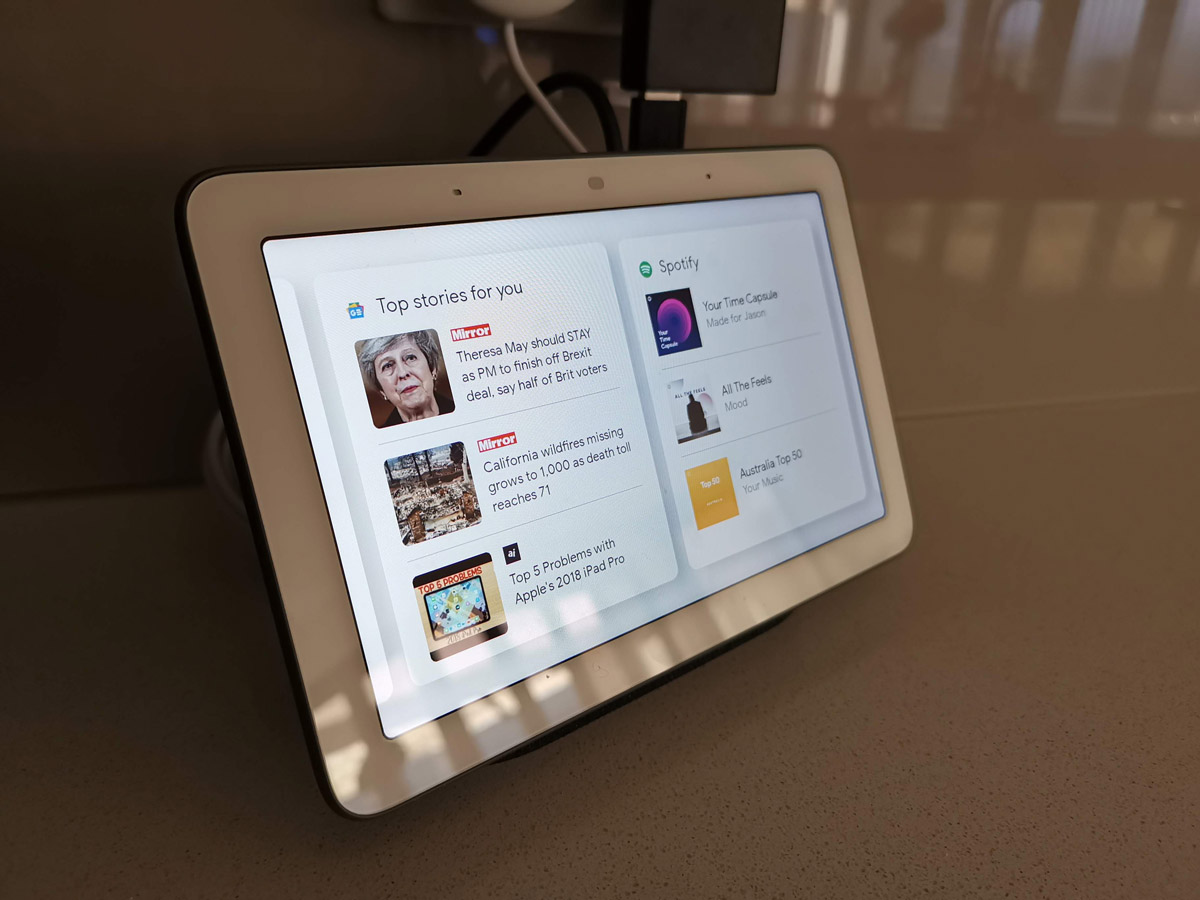

FEATURES
What will it do for you?
Features are the real reason you buy the product or not, while the design is important, the price is important, if the right set of features are there, you'll justify the price to enhance your life.
Let me start be explaining some of the features I love the most.
Routines
After using the Home Hub for a couple weeks I really wanted to dive more into the automations and that's where Routines come in. From the Google Home app on Android, you can create routines like Good morning, I'm home, leaving home, bedtime or completely create your own from scratch.
Routines have a basic structure, that is, you first set the phrase like Good morning, or 'tell me about my day' or 'I'm up'. So the full string would be an easy to remember 'Hey Google, Good morning'. The next step is to set a number of steps your Assistant should do for you. That's usually things like taking your phone off silent, adjusting lights, telling you about the weather, the traffic and time on your commute, what's on your calendar, any reminders.
The third step is to follow those base commands with some information or entertainment. You can have the Routine complete by playing music, delivering you the news of the day, starting an internet radio station, playing a podcast, audiobook or ending with nothing. The capabilities and customisability in these routines are seriously impressive. Naturally the big advantage over a regular voice-enabled smart speaker is the display, being able to play video news segments for example over a simply audio read is important when the information often is enhanced by video explanations. There's subtle touches Google have added like the sounds of birds in the background as they tell you about the weather, but most of all I loved the way the device felt customised to me (because I had spent time customising it), but being an Android user, being able to leverage things like my existing commute or location for weather was smart and sped up the process.
Ambient mode
If you live in the Google world, that is use Android and backup your photos to Google Photos, then the Home Hub is the perfect extension of that ecosystem. You can use your voice to call up any picture that you’ve ever taken in Google Photos. "Hey Google, show me my photos from Bali." Better yet, there's also the option to configure what's shown on the Home Hub in ambient mode, that is when you're not directly using it. Source for ambient photo slideshows are google Photos, an Art gallery, a full screen clock, or under 'Experimental' there's also Facebook and Flickr integrations.
Personally I share a lot of photos to Facebook, so I found the ability to select one or more albums incredibly valuable. Most of the time I had cute photos of my baby's last 8 months on the planet, spanning from the day she was born till today. Forget digital photo frames where you manually transfer a few photos on a USB drive, an internet connected device like the Home Hub and it's support for showing online albums is fantastic.
I love that I can upload a photo and it shows on the hub in minutes as the slideshow cycles through the couple hundred photos in that 'Baby' album.
The hub of your life
The Home Hub is likely going to be placed in a communal area like the kitchen, which means multiple people are likely going to want to interact with it. This means Google had to solve the issue of permissions, if I want information about my Calendar or reminders, then my wife (or your housemate) wants to call up their relevant information, you want to avoid clumsy sign out/sign in steps.
Google uses Voice Match, to instantly verify and get the calendar, commute, reminders and more for the person who matches that voice print. This works so well it's not like a user login, it's much smoother than that and I have to congratulate Google on this, it works so well that having multiple users in one house is very practical.
Control your Smart Home
Having a voice assistant in a convenient location means you can ask it to do things for you and that includes commanding other IoT devices around your smart home. Being able to control lights, cameras, TVs and more is one of the Home Hub's best features. You can command much of your connected home via voice, but that also means compatible devices also work through the Google Home app on your phone, making putting the control in your hands, when voice doesn't make sense (like a baby's sleeping).
Google Home Hub works with more than 100+ smart devices from 50+ popular brands, so if you've got other connected devices, there's a great chance they'll already work. This opens the possibility of saying phrases like "Hey Google, show me the front door camera." and having your Ring video doorbell feed show on your TV. This means the purchase price doesn't just account for the value in the device itself, but also the value you can extract from commanding other devices. This stuff is literally life changing in terms of convenience and offers a serious efficiency over manually opening each app to check things.
During my time with the Home Hub, the Nanoleaf Canvas review unit arrived, which has Google Home support. This means I was able to simply say "Hey Google, turn Canvas red" or "Ok Google, Turn off Canvas" and that really added to the amount I used that device. Sure these are all first world problems, but we're living in a first world country, let's enjoy it with life's little luxuries.
Visual Answers
Naturally you'd expect to be able to ask a voice assistant any question in the world and get an intelligent answer. When you do that on your phone, you get verbal responses, or are at best taken to the web for more information. On the Google Home Hub, you ask questions and get visual, immersive answers from Google on weather, recipes, local business info, and more. You can even watch helpful videos from YouTube.
If you're a child wears a tie as part of a school uniform and struggles with the process, it'd be easy to teach them to ask "Hey Google, show me how to tie and tie." and have them leverage the power of the internet for their learning.
Music
Much of the time spent around your home is boring, so you'll want some ambient noise as you go about regular duties like cooking and cleaning, so I loved the ability to play favourite songs, albums, artists, and music videos from YouTube Music. Of course you can also listen to Spotify or top radio stations. "Hey Google, play Christmas music on Spotify." works a treat.
Cooking with gas
Being on the kitchen bench, the Google Home Hub is perfectly positioned to be your assistant while cooking. Thanks to some nice integration with services like Taste.com.au, recipes are displayed visually and each step of the recipe is displayed visually, giving you a great headstart on ingredients with weird names you've never used before. Here's a quick video below of how it works.
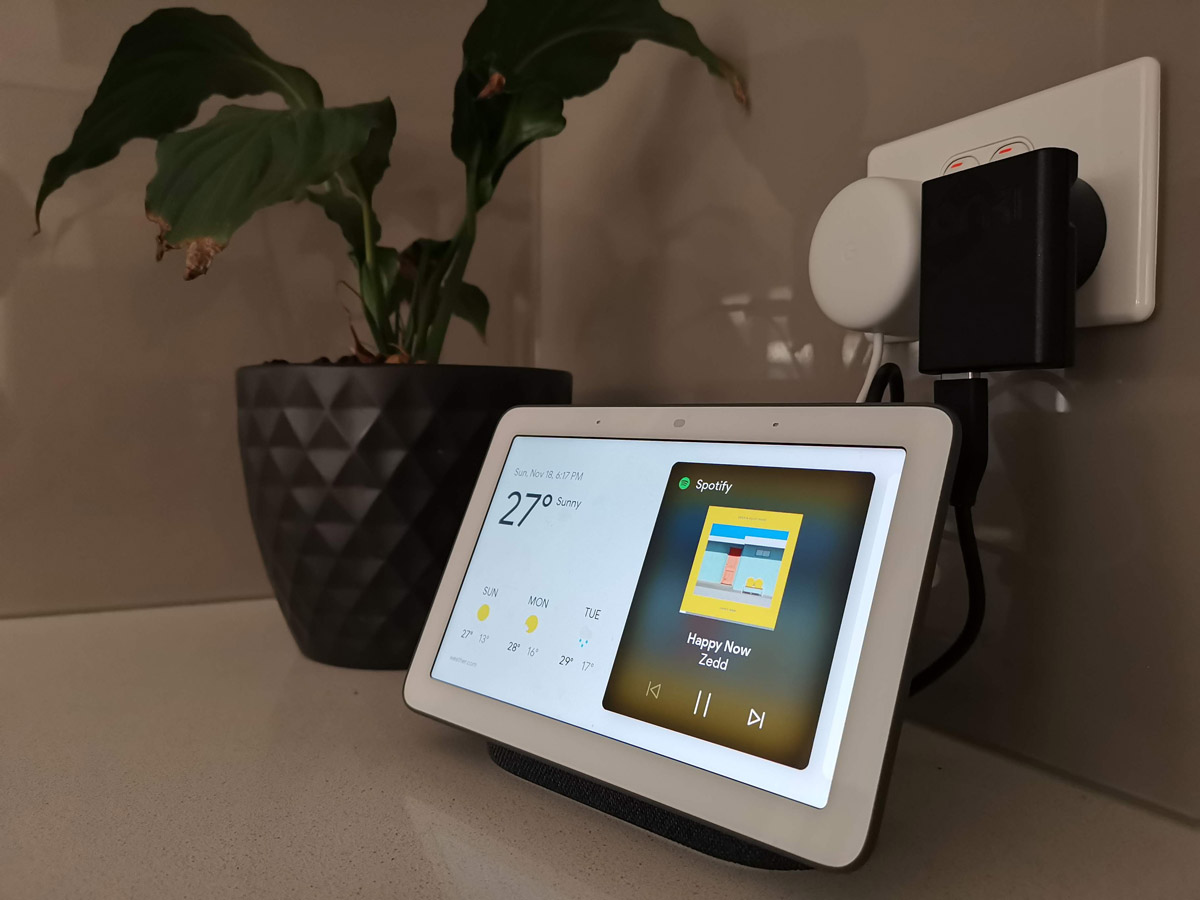

ISSUES
Room for improvement
For a device this capable, it does surprise me there's no option to throw some batteries in the base of it and take it outside. It'd be fantastic as a voice interface to play DJ at a party, complete with glanceable information on the artist and song currently playing. It doesn't even need all-day battery life, just 6-8 hours would do the trick. Given the device would only ever be semi-portable, a thicker product to fit more battery wouldn't be a problem.
I think the lack of a front-facing camera really limits this devices potential abilities to grow beyond a smart display to a video conference device with your family. In the US particularly there's a lot of nervousness in regards to privacy, so I understand it, but at least give us the option and do what you did with the microphone, give us a hardware switch to really ensure it's disabled if you're that kind of person who knows you'll never want it. If the price point was dramatically effected by it, I'd even like to see a separate video model that competed directly with Facebook's Portal or the Echo Show.
I love the utility of what the Google Home Hub offers, but the screen size is somewhat limiting. I think a 10-12" device would be perfect for the kitchen bench.
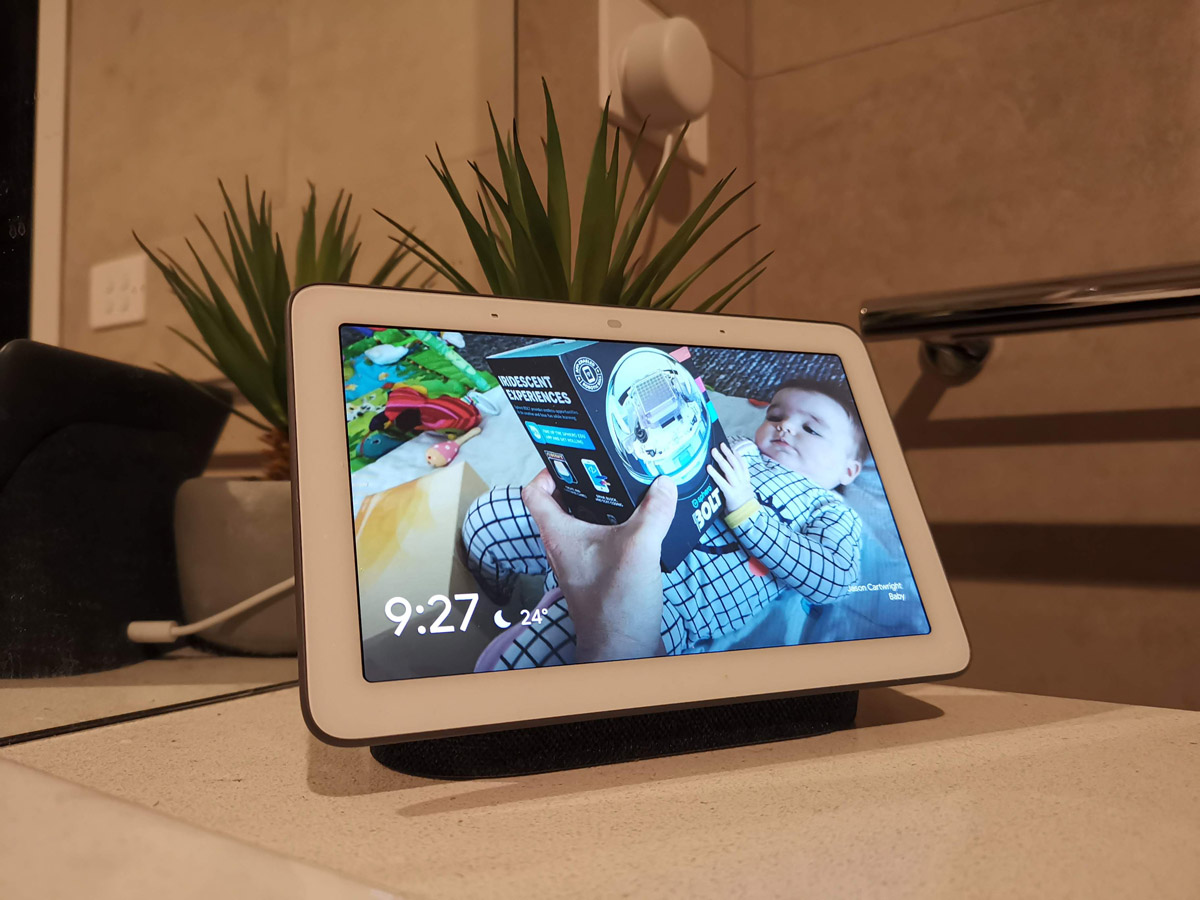

PRICE & AVAILABILITY
How much and when can you get one ?
The Google Home Hub is available now from JB Hi-Fi for A$199.00 (currently $20 off). For that price, you're getting pretty good value, as speakers with voice assistants can cost a similar amount, or sometimes more. For a connected device with a great touchscreen display to be only a couple of hundred, represents great value.
Home Hub is available in a variety of colours, Sand, Chalk, Acqua and Charcoal.
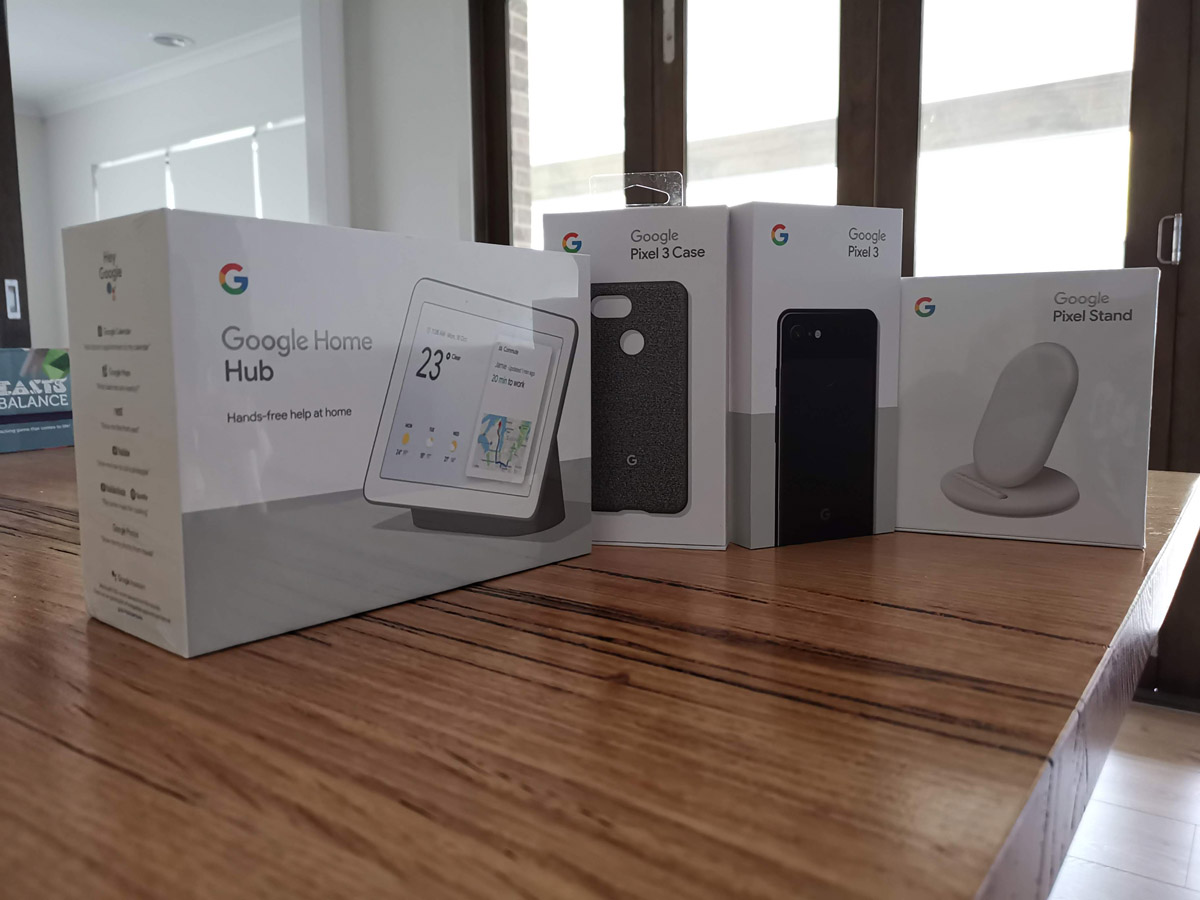

OVERALL
Final thoughts
The decision to buy a Google Home Hub or not really doesn't come down to the price (it's affordable), instead it really will be determined by any existing investments in voice assistants. Personally my house had a number of Amazon Echo spots and a couple of Sonos One's that are Alexa-enabled as well. Google Home Hub is a competing platform and therefore has a different wake word. You can certainly run both systems in one house, it's just a little clumsy as you have to remember to use the right phrase to command the right devices.
If you're starting with voice assistants in your home, then you should definitely get the Google Home Hub, especially if you already have an Android phone and / or use Google Photos. This device's ambient slideshow is so good, it may be enough to get you to buy as a digital photo frame that can also take voice commands.
Seriously though the list of abilities you have, that are enabled by this device, is nothing short of amazing. Homes are made more connected with devices like this, learning faster and easier and entertainment equally easy to come by. With many connected devices already on the home WiFi, not all of them are supported, but a vast majority are. The Hub part of the name is an accurate description as dropping a Google Home Hub into your world will create the seamless Smart Home experience you dreamed of, just check future products are Google Home compatible.
If you don't find one of these under the Christmas tree this year, then go buy one for yourself and for your family, you'll be glad you did. If you're in the Microsoft or Apple ecosystems, it's possible you could still use the Google Home Hub, but it's certainly a lot more capable when you go all-in.

